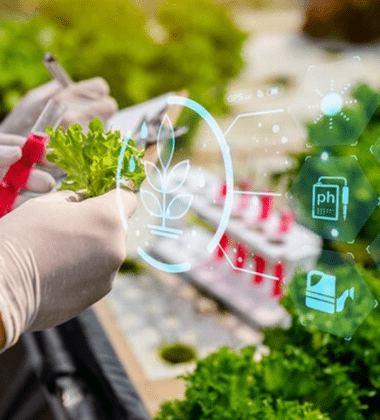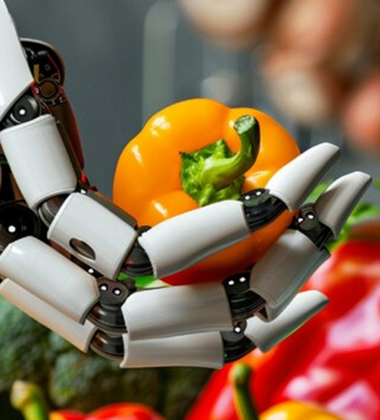In the food and beverage industry, timing is everything. Launch too early, and consumers might not be ready. Launch too late and you’re just another player in a saturated trend. The brands leading the pack aren’t just reacting to food trends—they’re forecasting them, shaping them, and sometimes even creating them.
That’s where food trend forecasting becomes a critical business capability.
In this article, we’ll unpack how F&B innovators are using data, flavor prototyping, and expo feedback loops to predict what consumers will crave next—and how you can turn those insights into retail-ready success stories.
Why Trend Forecasting Is Non-Negotiable
Trends drive attention, shelf space, and social currency. But chasing them blindly can be a recipe for waste. Effective food trend forecasting isn’t about copying what’s hot today—it’s about predicting what will feel inevitable tomorrow.
From climate-resilient ingredients to neuro-supportive snack formats, the stakes for being ahead (but not too far ahead) have never been higher.
And events like the Global Products Expo USA (June 26–28, 2025, at the New Jersey Expo Center) are becoming the ground zero for spotting the signals before they explode.
What Is Food Trend Forecasting?
Food trend forecasting is the strategic practice of identifying, modeling, and testing upcoming culinary and consumer behaviors to inform product development, branding, and go-to-market timing.
It blends:
- Data analysis (social media signals, flavor databases, market research)
- Cultural insight (macro shifts in values, beliefs, and wellness priorities)
- Hands-on experimentation (in kitchens, labs, and expo floors)
When done well, it transforms your R&D from reactive to proactive.
The New Flavor Pipeline: From Trend Signal to SKU
Let’s break down how today’s top brands are using forecasting to create tomorrow’s hits.
1. Identify Weak Signals Early
Trend forecasters are trained to notice micro-movements long before they hit mainstream media. These include:
- Ingredient mentions spiking on chef TikTok
- Academic research into gut-brain-axis foods
- Niche restaurant menu shifts in wellness-forward cities
- Cultural events influencing flavor nostalgia (e.g., Y2K flavors returning)
Tools like Spoonshot, Tastewise, and the AI-powered platforms showcased at the Expo help filter noise and surface early indicators.
Example: The Ube Surge
Two years ago, ube was a niche ingredient tied to Filipino desserts. Brands that caught its rise early now dominate the purple-hued aisle of Instagrammable snacks and drinks. Those who waited until Whole Foods included it on their “top 10” list are now playing catch-up.
2. Prototype Fast, Fail Smart
Once a signal is detected, the next step is prototyping. At the Global Products Expo, R&D teams are debuting flavor concepts not yet in full production—think limited runs, sample-only lines, and “tasting tables” that function as mini focus groups.
You’re not just looking for “likes.” You’re listening for:
- Which ingredients spark curiosity?
- Which formats feel intuitive vs. experimental?
- Which stories resonate with your target persona?
Example: Microbatching “Cereal Milk Kefir”
An L.A.-based dairy alternative brand debuted a cereal milk-flavored kefir at a recent expo. They weren’t sure if nostalgia and probiotics could coexist. The positive reaction enabled them to refine their packaging and enter test markets within 90 days.
3. Watch Competitor Friction Points
Sometimes, you can reverse-engineer trends by studying failed launches. When a big player pulls a SKU due to poor reception, it often signals a mismatch between concept and market readiness—not necessarily a flawed trend.
Your opportunity? Fix the gap.
- Make it more familiar (formulate as a snack bar instead of a beverage)
- Make it more story-rich (tie to culture, function, or sustainability)
- Make it more accessible (simplify use cases)
Forecasting includes learning from what didn’t work and why.
4. Connect Trend to Emotion and Identity
It’s not enough for a food trend to be new or functional—it has to mean something to consumers. This is where the emotional dimension of trend forecasting plays a role.
Ask:
- What does this flavor represent?
- How does it tie to values like wellness, nostalgia, cultural pride, or sustainability?
- Can it become part of someone’s identity (like keto or plant-based eating did)?
Example: Mood-Targeted Beverages
At last year’s expo, “calm” and “focus” drinks outpaced “energy” drinks in brand launches. The insight wasn’t just about ingredients—it was about emotional positioning. People wanted to feel different, not just be more alert.
From Trend to Retail: Proof-Backed Examples
Forecasting only works if it leads to action. Here are the brands that turned insight into SKUs:
A. Bright Bar – From Expo to Shelf in 6 Months
Spotted a growing interest in citrus-turmeric blends. Validated at the 2024 Expo with 500+ positive flavor trials. Now stocked in major wellness chains.
B. Roots & Ritual Snacks – Heritage-Inspired, Data-Driven
Used AI forecasting to map diasporic flavor trends among Gen Z. Created a line of African and Caribbean root veggie chips paired with modern dips. Built a cult following on social and sold out pre-orders.
C. Crispology – Texture-Led Innovation
Tuned into mouthfeel micro-trends (crunch + melt combo). Prototyped three unique chip textures at the expo with QR-code feedback. Most-requested texture is now a hero SKU.
Expo Intelligence: Your Forecasting Goldmine
The Global Products Expo USA isn’t just a showcase—it’s a living lab. Here’s how to extract the most trend forecasting value from your time there:
1. Use Smart Sampling
Collect qualitative data through interactive sampling. Use tablets, QR codes, and even live voting to track emotional responses.
2. Attend Forecasting Panels
Many sessions at the Expo are led by consumer psychologists, chefs, futurists, and retailers. They’ll point to next-gen flavor combinations and macro shifts in consumer behavior.
3. Document Micro-Reactions
Take photos, record conversations (with permission), and debrief after the event. Some of your best insights won’t be in the data—they’ll be in your own emotional observations.
Key Drivers Shaping Future Flavors
Stay ahead by tracking the major forces shaping food trends in 2025–2026:
- Climate-Resilient Ingredients: Millet, seaweed, cactus, lab-fermented proteins
- Neuro-Nutrition: Brain-supportive snacks with lion’s mane, L-theanine, magnesium
- Mood-Centric Branding: Products targeting specific emotional states
- Regional Revivals: Hyper-local flavors getting global remix (e.g., Persian sumac cola)
- Tech-Aided Taste: Precision fermentation, AI flavor modeling, and 3D printed snacks
Turning Forecasts Into Business Advantage
The difference between brands who chase trends and those who lead them often comes down to how they interpret and activate forecasts.
Use food trend forecasting to:
- Reduce product development risk
- Accelerate time-to-market for “next big thing” flavors
- Align innovation with future consumer values
- Create media-worthy launches with deeper storytelling
- Position your brand as a taste authority, not a follower
Final Bite
In the fast-evolving world of food and beverage, taste is just the beginning. What matters more is knowing what taste will matter next.
Food trend forecasting isn’t a luxury—it’s the new core competency for successful product development. And with platforms like the Global Products Expo USA, the opportunity to validate, refine, and prototype is at your fingertips.
Don’t wait for the trend to go viral. Prototype it. Taste-test it. Forecast it. And own it—before anyone else does.





